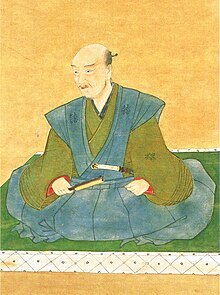This article may require copy editing for grammar, style, cohesion, tone, or spelling. (June 2024) |
Ishida Mitsunari | |
|---|---|
| 石田 三成 | |
 Ishida Mitsunari, depicted in a portrait. | |
| Daimyō of Sawayama Castle | |
| In office 1590–1600 | |
| Succeeded by | Ii Naomasa |
| Personal details | |
| Born | Sakichi (佐吉) 1559 Ōmi Province (present-day Nagahama, Shiga Prefecture) |
| Died | November 6, 1600 (aged 40–41) Kyoto |
| Resting place | Sangen-in, Daitoku-ji, Kyoto |
| Spouse | Kogetsu-in |
| Children | Ishida Shigeie Ishida Shigenari Ishida Sakichi Tatsuhime at least two other daughters |
| Parents |
|
| Relatives | Ishida Masazumi (brother) |
| Military service | |
| Allegiance | |
| Rank | Bugyō, Daimyō |
| Commands | Sawayama Castle |
| Battles/wars | Siege of Tottori Siege of Takamatsu Battle of Shizugatake Battle of Komaki and Nagakute Siege of Oshi Korean Campaign Siege of Fushimi Battle of Sekigahara |
Ishida Mitsunari (石田 三成, 1559 – November 6, 1600) was a Japanese samurai and military commander of the late Sengoku period of Japan. He is probably best remembered as the commander of the Western army in the Battle of Sekigahara following the Azuchi–Momoyama period of the 16th century. He is also known by his court title, Jibu-no-shō (治部少輔).